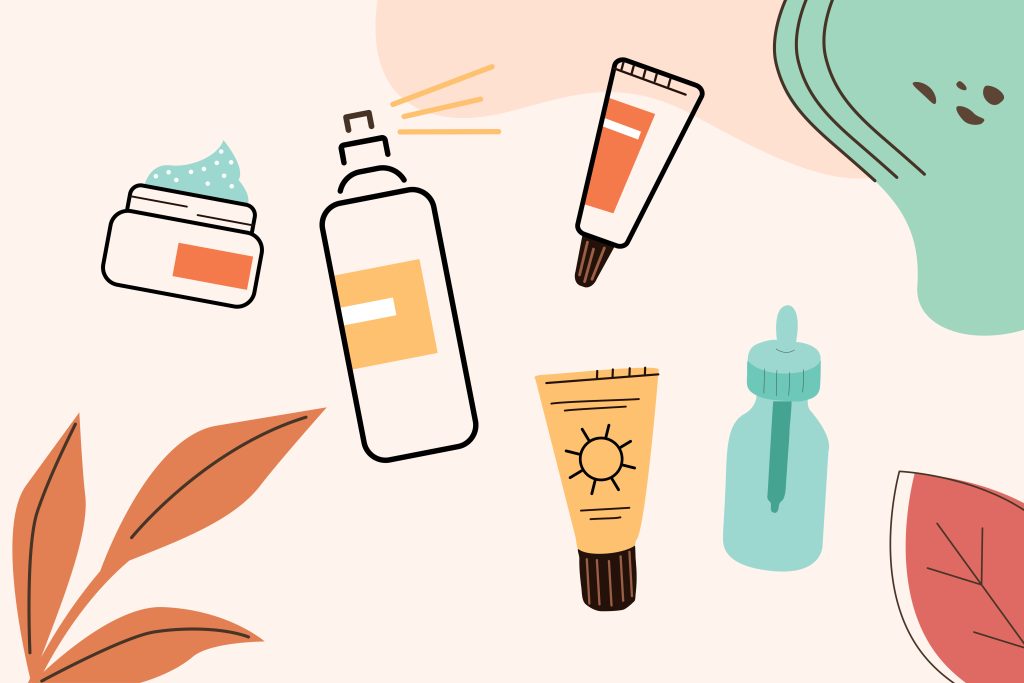We think a lot about what goes on our skin, but it may be equally important to consider when we apply certain products. Whether you’ve got a simple three-step routine or a full 10-step regimen, the order in which you use your skin care products does make a difference. Here’s a simple breakdown of where to start—and finish—to ensure your skin gets the love it deserves.
1. Cleanser
It’s no surprise that both your morning and night routines should start with cleansing. If you don’t properly clean your skin, the rest of your skin care products aren’t going to be able to effectively do their jobs. Most cleansers are either oil- or water-based. Studies suggest that oil cleansers have a higher cleansing ability and are better at unclogging pores and removing makeup. However, they also have been linked to breakouts. Water-based cleansers are gentler and can help prevent breakouts in oily or acne-prone skin.
2. Toner
Toner is a fast-penetrating liquid product that replenishes skin through hydration, removes dead skin cells and can clear up dirt and other impurities left behind after cleansing. Depending on the product, toner can contain acids, glycerin, antioxidants and anti-inflammatories. It acts as a primer for your other skin care so it should be applied on the skin immediately after cleansing, either directly with your fingers or using a cotton pad. In the past, many toners were alcohol-based, meaning they dried out and irritated the skin. You don’t have to worry about that with most modern products, but make sure you double check the label to ensure it’s alcohol-free.
3. Serums
There are so many serums on the market, it can be difficult to know exactly what these products do. Put simply, a serum contains a high concentration of a specific ingredient, such as vitamin B or C. While they often have moisturizing properties, serums do more than deliver hydration to your skin. They are used to treat fine lines, improve skin firmness and texture, and protect against damage caused by free radicals. Serums should be applied after cleansing but before you start moisturizing because their smaller particles cannot easily penetrate other products, making them less effective if applied later. If you’re using a serum that contains an acid, it may cause irritation if you combine it with other acid-based products. When starting a new product, test it on a small patch of skin on its own and with the other steps in your routine.
4. Eye Cream
The delicate skin around your eyes is thinner and more sensitive, and that means it’s more likely to show signs of aging. An eye cream can help wrinkles, fix discoloration and firm up the area. It should be applied using a gentle patting motion with an applicator or your ring finger—rubbing may contribute to damage. You can use an eye cream in the morning, evening or both, but you especially may want to consider making it part of your nighttime routine. Applying the product overnight will give it a better chance to penetrate your skin and reduce issues like dark circles and fine lines.
5. Spot Treatments
A spot treatment is anything you apply to treat a blemish, such as acne drying treatments or anti-inflammatories that fight irritation and redness. They won’t always be a part of your skin care routine since they are dependent on breakouts. It’s a good idea to apply them after cleansing but before you start moisturizing. These products are great to use at night because that’s when your skin naturally goes into repair mode. However, if your evening routine already contains retinol or an acid-based toner, consider moving your spot treatments to the morning so you aren’t putting your skin through too much at once.
6. Moisturizer
Moisturizer doesn’t only hydrate your skin. It also protects your skin and traps the other products you’ve applied underneath itself so that they aren’t wiped away and can more effectively do their job—that’s why it should come near the end of both your morning and evening skin care routines. Your skin type is going to dictate what type of moisturizer you use. For example, drier skin may benefit from a thicker cream while oily skin may work better with a gel. In the morning, if you’re applying makeup, wait at least five to ten minutes to let your moisturizer sink in before putting on your primer or foundation.
7. Face Oil
If you use a face oil, it should be the last step in both your morning and evening routines. These products aren’t going to moisturize your skin that much, but they will seal in what you’ve applied before and make your overall regimen more effective. Oils can penetrate moisturizers and serums, but those other products cannot penetrate oil. If you don’t apply it last, you’re going to reduce the effectiveness of anything you put on after it.
what about retinol?
Retinol, a vitamin A derivative, can have many benefits, including stimulating collagen and elastin production, which helps keep the skin looking supple and youthful. However, it can be inactivated by sunlight, so there’s no use making it part of your morning routine. Apply it very sparingly and leave it to work overnight. Since retinol also can dry out your skin and make it super sensitive, use moisturizer before and after application to create a buffer for your skin without diluting the product.
don’t forget your spf!
Even if you skip every other skin care step, you should apply sunscreen in the morning. If you are going through your entire routine, it goes very last because it doesn’t need to penetrate your skin to be effective. In fact, it’s acting as a shield to protect you. Many products contain an SPF, but make sure you’re applying something with at least an SPF 30 to get proper coverage.
Source: healthline.com
